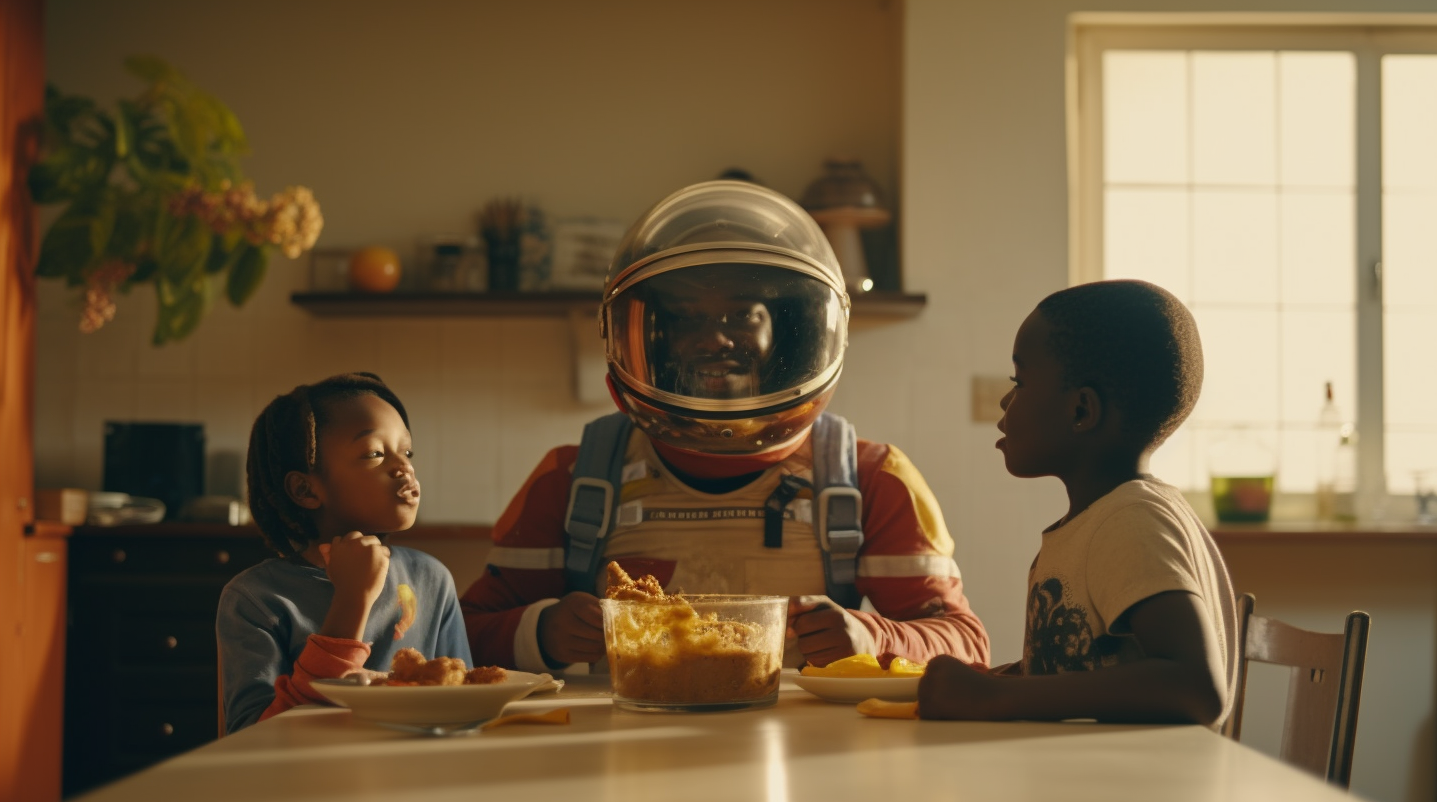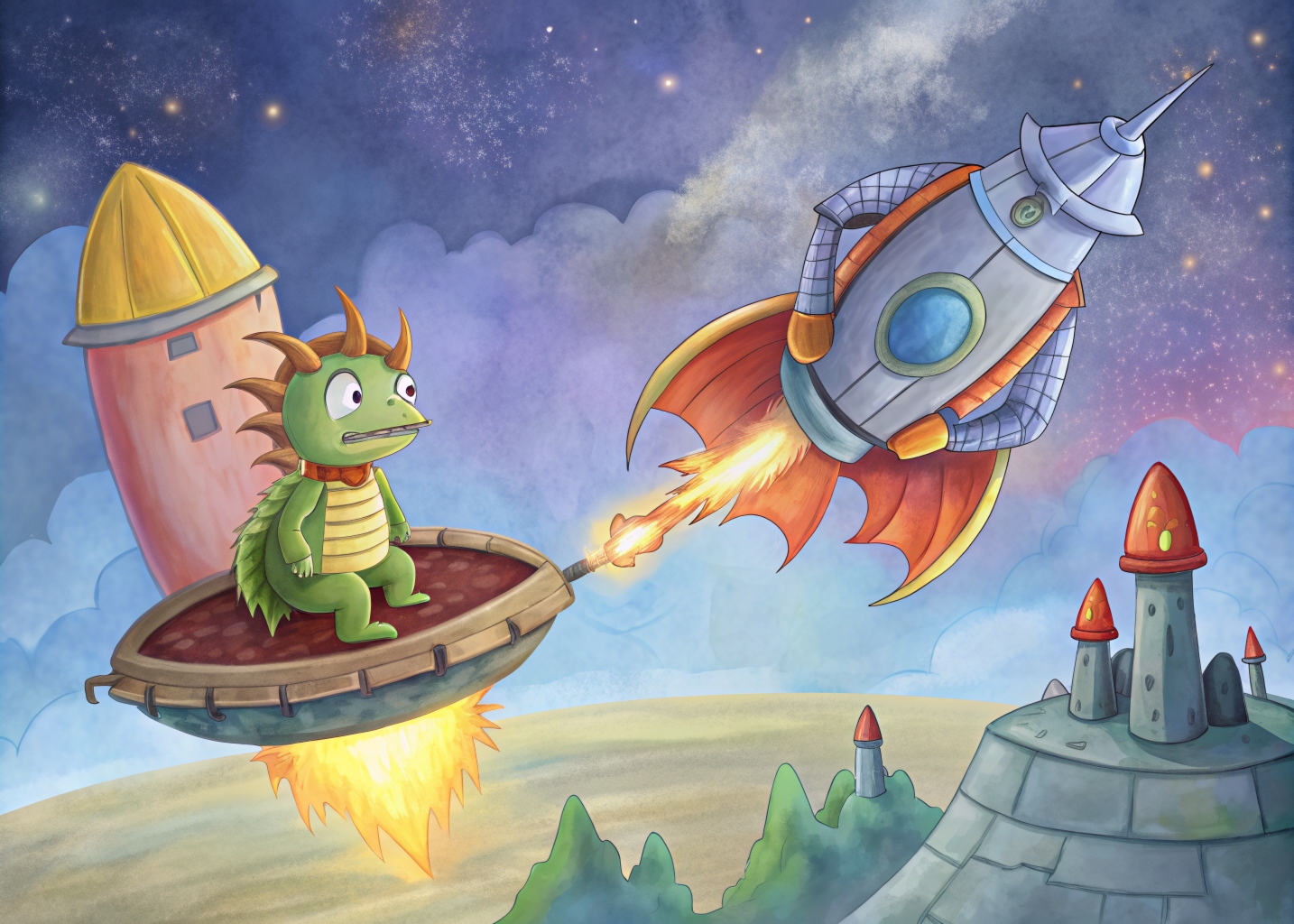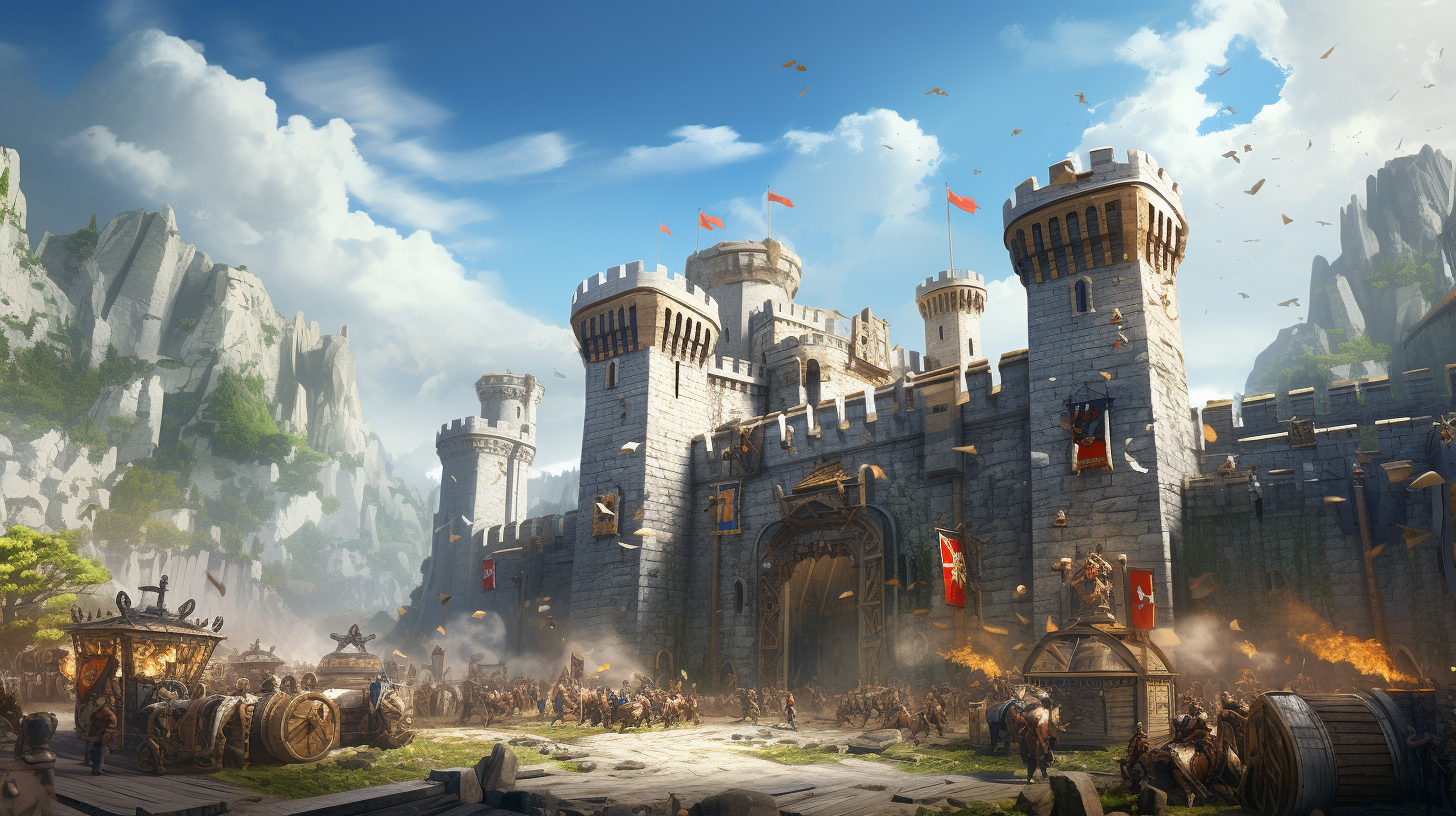Games today are getting much better at telling stories that make you feel real emotions. In the past, many games had simple stories that were just there to set up the action. But now, stories in games are becoming deeper, more complex, and more cinematic – like a great movie or TV show. Indie game developers are leading the way in focusing on storytelling over gameplay. Big budget storytelling games from major studios are also investing more resources in narratives, characters, and dialogue to immerse players in rich story worlds.
The best narrative-driven games pull you in and make you care deeply about the characters. Through environmental details, backstories, and pivotal plot points, they create laughter, shock, sadness, tension and joy. You might be cracking up one minute at the protagonist’s silly banter. Next, you could be crying as a beloved character meets a tragic end. Or seething in anger when the villain reveals his master plan. The writers, artists and composers work together to craft these emotional peaks and valleys in video games and storytelling.
So kudos to the storytellers pushing games to new narrative heights! Now excuse me while I laugh, cry, and shout at the adventures unfolding in these digital worlds. Just pass the tissues when you’re done.
The Rise of Storytelling Video Games
In recent years, there has been a big growth in story-driven video games that focus more on storytelling and characters instead of just gameplay. The best story telling game is being made both by small independent developers as well as big gaming studios.
Rise of Indie Sory-Driven Games
New easy-to-use story teller game development platforms have allowed indie developers and small teams to create compelling story telling games. Titles like Firewatch, What Remains of Edith Finch, and Gone Home became hugely popular hits despite being made on tiny budgets by just a few people. These indie narrative games succeeded by focusing more on telling an engaging story and developing characters over providing complex gameplay mechanics.
Indie games have more flexibility to take risks by exploring experimental and avant-garde narratives that major studios might avoid out of fear of alienating a mainstream audience. With lower production costs, indie developers can nurture a craft of interactive storytelling not bound by profit margins. Many indie games have touched on deeper themes like mental health, loss, and relationships. This combination of creative risk-taking and resonance has connected with players looking for a different kind of gaming experience.
AAA Game Development Studios: Cinematic Experiences
Major gaming studios like Sony and Ubisoft have begun investing more heavily in story-driven single-player games with a cinematic flair. Specifically:
– Hiring television and film writers to script the best story telling game narratives. This brings more layered plotting and complex character arcs to games.
– Incorporating Hollywood talent for voice acting and performance capture. By casting famous actors and using advanced motion capture, games bridge the gap with film in terms of talent and production quality.
– Pouring resources into a detailed, movie-like presentation. Cinematic camerawork, emotive musical scores, and sweeping set pieces immerse players in a narrative world.
Games now increasingly compete with – or even surpass – movies and shows by offering dozens of hours of narrative content with AAA production values. This signals a shift: major studios recognize narratives as central to the future of mainstream gaming.
Advances in Technology Enable More Complex Storytelling
Recent technological leaps have enabled game developers to tell stories in more immersive and dynamic ways. Performance capture systems allow much more lifelike facial expressions and character animations. This facilitates emotional connections between players and in-game characters dealing with loss, moral dilemmas, and challenging arcs of personal growth.
Additionally, advanced AI systems allow for more emergent and nonlinear narratives that shift based on player decisions. Sophisticated dialogue trees with smart procedural generation mean conversations feel more dynamic and responsive. NPC behavior adapts as well for more ambiguity in outcomes – wars have broken out unexpectedly based on the ripple effects of a player’s actions. This brings more drama, surprise, and the feeling of living through an evolving world.
Finally, photorealistic graphics and detailed environmental modeling immerse players thoroughly in narrative contexts, making emotional resonances more visceral. Walking through the bureaucratic ruins of a fallen society invites reflection on authoritarianism; wandering the solitary wilderness stirs feelings about isolation. Place becomes character, embedded with symbolic meaning.
Technology will only progress further, bringing more subtleties of expression and reaction while expanding possibilities for procedural narratives. Both indie developers and AAA studios will continue pioneering new frontiers in interactive storytelling.
Creating Believable Game Worlds
What makes a game world really come alive? Three key things pull players deeply into virtual worlds – packed environments that feel lived-in, characters we care about, and choices that shape the story.
Environments With Lots of Details Immerse Players
When game story telling creators fill their worlds with little touches, it makes discovery exciting. The Souls games hide story tidbits in object descriptions players need to piece together. Rust shows how abandoned buildings can tell stories through wall scribbles and things left behind. Rich spaces packed with stuff make players feel like detectives digging up backstories.
For example, in the horror game P.T, a single hallway crammed with unsettling details like bloody handprints and scattered cockroaches builds tons of dread long before you encounter any actual threats. Players fill in details themselves, which makes things scarier. Great worlds tug at our curiosity by hinting at wider tales.
Interesting Characters Pull You In
In-depth characters we care about give purpose within top storytelling game worlds. Series like The Last of Us and God of War focus heavily on growing father-child relationships. Through excellent voice acting and lots of emotional back-and-forth dialogue, you see characters show affection, cope with losses, and change over time.
Memorable companions like:
- Joel and Ellie from The Last of Us
- Kratos and Atreus from God of War
- Geralt and Ciri from The Witcher
- Lee and Clementine from The Walking Dead
feel very human because you journey long enough to connect with their personalities and struggles. Decent writing and lifelike animations that capture a range of expressions let us read characters’ feelings – even in fantastical settings. Top storytelling games like:
- Demon Slayer
- Genshin Impact
- Red Dead Redemption 2
- Persona 5
show that good characterization through dialogue, intricate backstories, and voice acting surpasses environments or battles for engagement over the long term.
Player Choices Change Things Up
Storytelling games for adults that track player decisions across chapters and even between sequels also pull people in more through “what if?” curiosity. Big choices that reshape events and relationships down the line make you invested. Seeing how key heroes from past Mass Effect games reappear in later ones based on how you interacted with them shows little ripples can build.
Being able to replay chunks of story telling video games differently also suits player creativity. Imagine saving someone destined to die or getting better outcomes for star-crossed lovers. Series like Elder Scrolls and Witcher encourage replayability by having lots of narrative forking paths to explore based on player whims. Your choices ultimately steer characters you get attached to.
In the end, interactive story telling games that let you uncover, influence, and be moved by their worlds eclipse basic shooting challenges. The right environmental details, well-crafted characters, and player interactivity blend to create places that live on in memory for feeling real and full of possibility.
Excellent Storytelling Techniques Used in Games
Many popular free storytelling games nowadays try to fully wrap up players through recognizable story outlines, striking sights and sounds that play with your emotions, and switching between slower quiet moments and intense loud moments. When developers combine these techniques skillfully, it often results in super memorable Elden Ring storytelling adventures.
Familiar Character Types and Plots
By building game tales around famous character templates and known dramatic story structures, developers easily hook our curiosity. This is because we already feel connected to certain heroes or plot patterns from iconic movies, ancient myths and religious tales that have been retold forever.
Seeing a furious, strongman hero like Kratos from God of War slay mythic beasts and gods feels familiar – he resembles famous mythical heroes like Hercules or Odysseus.
In fantasy interactive narrative games, the classic “Hero’s Journey” storyline made famous by franchises such as:
– The Lord of the Rings;
– Harry Potter;
– Star Wars;
– The Legend of Zelda;
remains popular for transforming normal player characters into great heroes who must pass difficult challenges before achieving glory.
Some other best story telling games PC that use recognizable hero character templates include:
– Geralt (The Witcher);
– Master Chief (Halo);
– Dragonborn (Skyrim);
– Commander Shepard (Mass Effect).
Storyteller game free writers lean on these timeless heroic patterns so they spend less time explaining backgrounds or motivations – the embedded hooks already catch our attention through familiarity.
Music and Visuals That Pull On Your Heartstrings
The sounds and sights that arcane storytelling games use are essential for emphasizing emotional moments in the storyline. Soaring choirs, gentle piano melodies, or energetic battle drum beats complement game scenes meant to relax us, depress us, or excite us. Highly expressive facial animations also communicate a wide range of moods — anguished winces, blissful smiles, lonely frowns—that we intuitively feel along with characters. Highly expressive facial animations also communicate a wide range of moods that we intuitively feel along with characters.
When the music played aligns well with character expressions, players internalize the intended emotions much more intensely. Lots of the best storytelling PC games interweave highs and lows using audio and visuals to provide an immersive emotional journey.
Here are some examples:
| Music/Art Style | Game | Emotion Conveyed |
| Sorrowful string music | Brothers: A Tale of Two Sons | Grief, longing |
| Haunting piano melodies | Ori and the Blind Forest | Sadness, loneliness |
| Bright cheerful instrumentation | Animal Crossing | Relaxation, joy |
| Ominous orchestral swells | Bloodborne | Tension, fear |
| Upbeat rhythmic battle music | Final Fantasy 7 Remake | Excitement, heroism |
Balancing Loud Action and Quiet Contemplation
In the same way a loud energetic song feels more triumphant after soft and slow build up, or an explosion has more impact following total silence, contrasting the pace of action and quiet in story telling games PC amplifies both thrill and thoughtfulness. Frantic battles against zombie crowds in The Last of Us land harder when they follow extended tense stretches sneaking quietly through abandoned buildings with just a knife. After an exhausting firefight, letting players wander and regroup for a bit offers relief before the next bout.
Likewise, the massive open worlds of Elden Ring the storyteller, Ghost of Tsushima and Horizon Forbidden West place urgent quest targets alongside options breaking away – like stumbling upon hidden forest ponds, seaside ruins or misty mountain shrines that reward wandering between quests. Balancing intensity and difficulty with recovery periods and reflection prevents players from getting worn out, while adding depth. Building quiet spaces also makes revealed grand vistas more jaw-dropping following patient traversal.
Carefully blending beloved traditions, moving audiovisual displays, and alternating action levels pulls players deeply into interactive stories by targeting hearts first and technical graphics second. The recipes work!
Crafting Memorable, Realistic Characters in Games
Many best storytelling video games feature highly complex player and non-player characters (NPCs) that avoid being simply good or evil archetypes. Through extensive backstories, evolving motivations, and relationships impacting their choices, the most lifelike characters demonstrate realistic emotional depth and change over time.
Complex Motivations Beyond Good and Evil
The most compelling game characters have motivations more intricate than basic heroism or villainy. For example, God of War’s Kratos harbors rage from tragic past events like the murder of his family. This pain fuels vengeance seeking bloody satisfaction rather than pure justice – his fury remains bound to deep personal losses. We understand Kratos through his suffering, not an archetype.
The Last of Us features survivalists Joel and Elliot struggling through a post-apocalypse landscape. While among the few immune to the pandemic fungi in their world, even supposed “heroes” commit morally ambiguous acts like torture or murder in this dire context defined by scarcity and tribal mentalities. Situational nuance takes precedence over judging absolute morality. The world exists in shades of gray.
Open world titles like Elder Scrolls, Fallout and the Fable series also afford players multifaceted dilemmas. One quest might present opposing groups without clear rights or wrongs. Do you side with rebel magic users or the king’s wary guard? Each has merits and flaws, so choices prove challenging, requiring compromises rather than solutions. This avoid simplistic binaries.
Backstories and Relationships Add Depth
Vibrant backstories detailing how characters came into their current roles gives context for their capabilities, knowledge bases and emotional tendencies. The agent 47 from the Hitman series exemplifies this with his extensive training since childhood shaping his assassin skills. We understand his mastery through origin stories revealing lifelong dedication.
Interpersonal relationships also add complexity, showing how attachments and past interactions shape decisions. In apex Legends, fellow competitors Gibraltar and Bangalore share military histories giving them special bonds. Their friendly fire jabs during matches demonstrate deeper camaraderie. Shared stories layer their battlefield partnership.
Prequels detailing earlier adventures likewise expand horizons, letting audiences learn more about fan favorite figures. Series entries like Red Dead Redemption 2 enriches protagonist John Marston by exploring his former outlaw gang members. This backstory exposure through long-term character ties makes him more three-dimensional.
Game Character Arcs and Development Over Time
The most compelling storytelling game design transform subtly across sequels and franchises, exhibiting new personality aspects in response to unfolding dramas. For example:
– Link in the Legend of Zelda series maintains his essential courage but gradually opens up more, sharing dialogue as technology enables advanced emotional expressions.
– Kratos from God of War softens somewhat as a father in later games compared to his initial raging incarnation.
– Mario and Bowser’s eternal conflict shows flashes of playfulness and humor amid the hero/villain dynamic.
Other examples of telling a story through video include:
– Commander Shepard’s decisions in Mass Effect impacting old ally reemergence.
– Clementine from The Walking Dead games maturing from a mentee to leader.
– John Marston’s backstory being enriched by former gang members in Red Dead Redemption 2 prequels.
– Chrono Trigger’s time travelling adventures allowing alternate futures for core characters.
Through accumulating adventures, figures reference past relationships and choices that influence their situational reactions – underscoring continuity and realistic growth over time between titles. This longitudinal approach creates persistent bonds with players facing parallel real world evolution.
Making Players Laugh, Cry, and Bond
Lots of popular storytelling PC games get big reactions from players – from giggling at goofy characters to weeping when friends die or quests conclude. Players can forge tight bonds sharing adventure struggles beside figures who feel real.
Laughing Together, Crying Together in Storytelling Games
Lots of story-focused games make you happily laugh, then sadly cry – eliciting a spectrum. Humor creates joy; losses hurt more after chuckling together. Examples include:
Funny Uplifting Games:
– Animal Crossing’s playful animals;
– Undertale’s quirky skeletons;
– Wallace and Gromit puzzle;
– Mario and Luigi’s goofiness;
– Doug and Dinsdale surgeon games.
Make you crack up during challenges before tackling new brain-teasers. Amusing characters and silly dialogue intervals refresh between hurdles.
Tragic Tearjerker Games:
– That Dragon Cancer;
– Permadeath roguelikes;
– The Last of Us;
– Walking Dead series;
– Final Fantasy 7;
– Mother 3;
– To The Moon.
Use death, sacrifice, or bittersweet endings after long journeys to elicit sadness. Players invest emotionally for dozens of hours – making eventual losses shatter hearts. Cathartic sharing of grief can bond fan communities in mutual consolation.
Bonds Forged Through Hardships
Beating scary villains together makes close friendships between player and game heroes. Moving through twists in the story matters too. Failing yet trying again also builds bonds over time. After so much shared effort, those characters are like supportive comrades. We know their pain well.
Their in-game bonds represent the dedication we give as players. We root for those heroes as tight partners pursuing the same outcome. Spending dozens of hours across Witcher chapters or Final Fantasy quests makes success more rewarding. We celebrate them as our inner circle that we have supported through thick and thin.
The payoff comes when they eventually overcome obstacles through joint resilience. We high five each other for never giving up despite blows. That moment of triumph with characters that feel like real supportive allies makes the player feel great too. They congratulate us on sidelines as we cheer their brave victory.
Epic quests across the Mass Effect trilogy has us guiding Commander Shepard through harrowing battles with alien threats. Decorating his ship cabin with mementos and steering private conversations forges personal attachment. When Shepard finally beats the Reapers after 3 games as our custom champion – we tear up at that moment.
Across billions of matches, League of Legends teams communicate tactics then dive into messy skirmish after skirmish together. Healing each other, planning ambushes and dominating through synced abilities – that shared flow state builds solidarity. Lifting the championship cup alongside battle-tested partners elicits fist pumps.
In gritty shooters like Gears of War, we experience the same gore and grim odds as fellow squad members. Watching their back while they save us from deadly mutants or blind ambush spots cultivates kinship through reliance. Our heartbeat quickens in unison when the last boss goes down.
Seldom words are even needed in co-op platformers like Sackboy Adventures. Mimicking emotes and timing tricky jumps in sync says it all. Triumphing after dozens of failed attempts at nail-biting survival sequences bonds players with the stitched hero. We grind together at levels clear, united through creative pantomime perseverance.
Storyteller Game Price
The development of the “Storyteller” game involved a dedicated team of professionals who worked tirelessly to bring the game to life. The process began with conceptualizing the game’s core mechanics, storyline, and art style. Game designers collaborated to create engaging gameplay elements, while writers crafted an immersive narrative that would captivate players.
Once the initial concept was solidified, developers started coding the game, building the necessary systems and functionalities. Artists and animators worked in tandem to design visually stunning characters, environments, and special effects that would enhance the player’s experience. Sound engineers and composers created a captivating audio landscape, including music, sound effects, and voiceovers, to further immerse players in the game world.
Throughout the development process, the team conducted rigorous playtesting and iteration to refine the gameplay mechanics, address any technical issues, and ensure a smooth and enjoyable player experience. This involved gathering feedback from testers and making necessary adjustments to enhance gameplay balance, pacing, and overall quality.
The development timeline for the storyteller game can vary depending on the scope and complexity of the project. It typically involves several months or even years of dedicated work, with milestones and deadlines set to keep the development process on track.
Overall, the storyteller game development involved a collaborative effort from various professionals, each contributing their expertise to create an engaging and immersive gaming experience for players to enjoy.
In Summary
Video storytelling for games now tell more realistic emotional stories than ever. They make players laugh loudly and cry deeply. These storytelling tabletop games will keep crafting more moving storylines as technology advances further in the future.
Story telling in games that make us feel strong feelings stick in our minds for a long time. We remember cheerful moments and very sad parts for years after finishing play. These special moments have a lasting impact.














